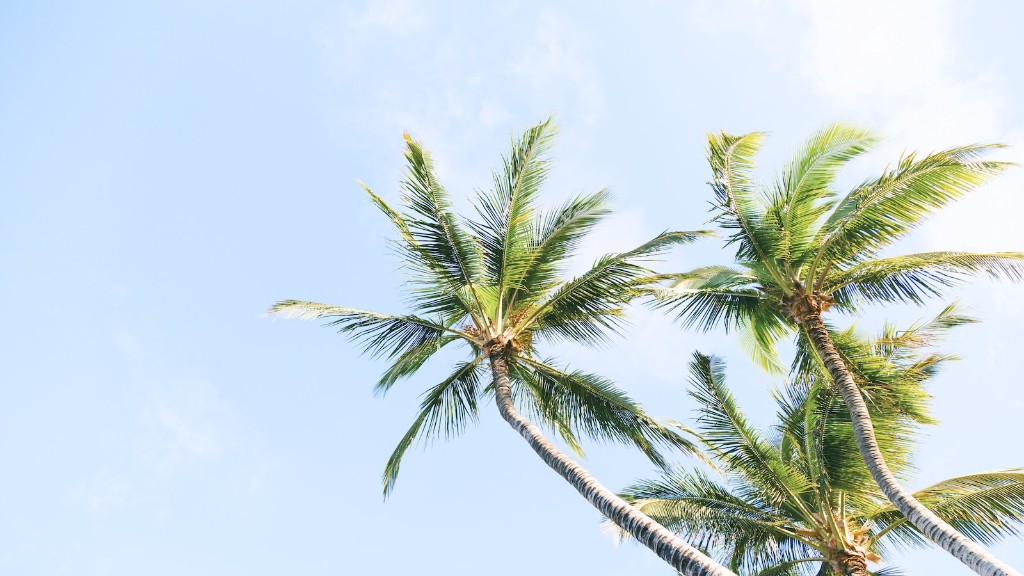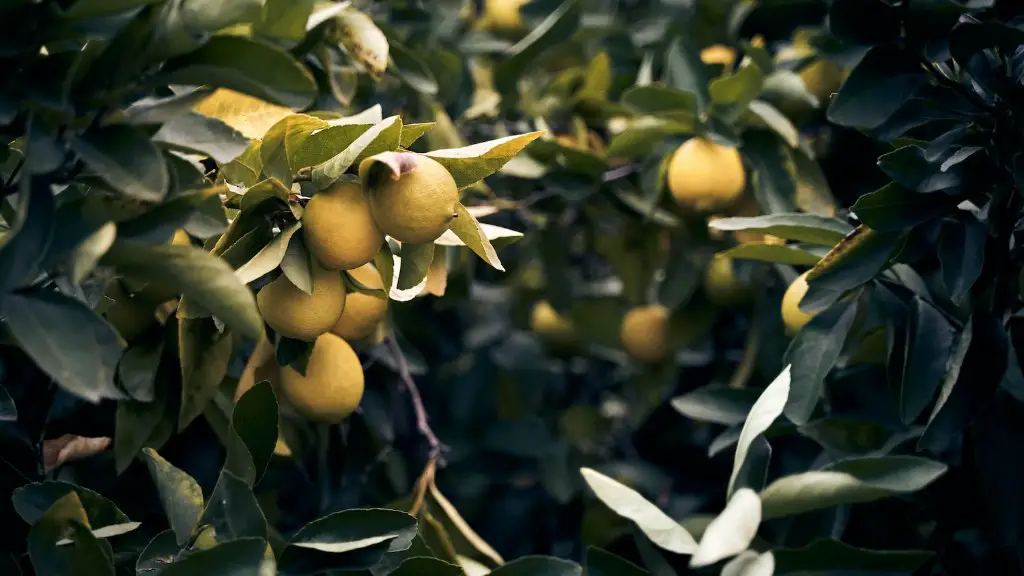A palm tree is a tall, slender tree with long, green leaves. Palm trees are native to warm, tropical regions and are a common sight in many vacation destinations. While palm trees are often associated with relaxation and leisure, they require regular care and maintenance to stay healthy and looking their best. In this article, we will provide some tips on how to take care of palm trees.
To take care of a palm tree, water it regularly, fertilize it monthly, and trim it as needed.
How do you take care of a potted palm tree?
Watering your plants deeply and thoroughly promotes healthy root growth. This is especially important for container palms, which may need extra attention. Plants that are exposed to sun and wind in outdoor containers dry out faster than plants in the ground; they may need daily summer watering. Containers in protected indoor locations hold moisture better, so they may not need to be watered as often.
Most palms will do well indoors if you can provide them with bright, indirect light and keep the soil in their containers moist most of the time. Ensure there is some humidity in the air, and keep the palm away from cold drafts and blasts of dry, conditioned air.
How often should palm trees be watered
A new palm should be watered every day during its first week, every other day during its second week, and then three times a week during its third week. After that, watering should be done as normal for established plants. However, for more established palms, watering should be done only 2-3 times per week, and this is only in the absence of rainfall.
If you notice that your tree’s leaves are beginning to turn brown at the tips, it may just be a sign of stress. However, if the leaves are fully brown, dead, or dying, it is acceptable to trim them off. As with any tree, you never want to trim too many leaves at one time, as this can over-stress the tree. With proper diagnosis and care, your tree should be able to recover from any stress.
How long do potted palm trees last?
When choosing a palm tree to plant, it is important to consider the tree’s lifespan. The average lifespan of a palm tree is between 7 and 8 decades, but some species only live for 40 years, while others can live up to 100 years. This can have a significant impact on the long-term maintenance of your landscaping, so be sure to do your research before selecting a specific species.
If you notice the top center stalks of your palm tree turning brown and/or shriveling, this is a sign that the tree is not healthy. The most common cause of this is a lack of water, so be sure to check your tree’s watering schedule and make sure it is getting enough water. If you suspect your palm tree is sick, it is always best to consult with a certified arborist or palm tree specialist to get a diagnosis and treatment plan.
Are palm trees hard to keep alive?
When it comes to caring for palm trees, there are a few key things to keep in mind. First and foremost, it is important to water your palm tree regularly and deeply. Newly planted palm trees will need to be watered frequently, up to several times a week. Once your palm tree is established, it will need less water, but it is still important to water it deeply once a week or so.
In addition to watering, it is also important to fertilize your palm tree regularly. A good rule of thumb is to fertilize every other month or so. Just be sure to use a fertilizer specifically designed for palm trees.
Finally, it is important to prune your palm tree regularly. This will help to keep it looking its best and encourage new growth.
If you see wilting, discolored, or stunted palm fronds on your palm tree, this may be a sign that the tree is dying or already dead. While there may be cases where the damage can be stopped and reversed, it is important to be aware of these signs so that you can take appropriate action. If you see any of these signs, you should contact a professional tree service to assess the situation and determine the best course of action.
Can palm trees get too much sun
Most palms are tolerant of (or prefer) shade and may fail to thrive if they receive too much direct sunlight. Low-light palm species prefer bright indirect light but also can tolerate less light, especially during the winter months.
It is important to water a new palm everyday during its first week. After the first week, you can water the palm every other day. Once the palm is more established, you can water it 2-3 times per week. Some palms might only require watering if the top 1-2 inches of the soil has dried out.
What does an overwatered palm look like?
If you see any of these signs in your palm tree, it is likely that it is overwatered. Be sure to check the soil moisture and reduce watering accordingly.
A lot of people who love palm trees tend to overwater them or don’t give them enough water. One way to avoid this is to get a soil wetness meter to check for soil dampness. You can also stick your finger into the soil and if the first 2 inches are dry, it is typically ok to water.
Is Epsom salt good for palm trees
If your palm is suffering from a magnesium deficiency, Epsom salt can be a good supplement in addition to regular fertilizer applications. Sprinkle 2 to 3 pounds of Epsom salt under the tree’s canopy, then water.
Natural browning is a natural process that happens to leaves as they reach the end of their life. The leaves will turn brown, starting at the tip and continuing until the leaf is completely brown. If only a few leaves are browning, and new foliage is still growing, then there is no cause for concern.
What causes palms to turn brown?
Indoor palms require special care in order to thrive. They are sensitive to chemicals in tap water, so it is important to water them with water that has been allowed to sit for 24 hours. Browning of the leaves can also be caused by underwatering, overwatering, root rot, and fertilizer buildup. By following these guidelines, you can help ensure that your indoor palm stays healthy and happy.
Make sure to choose a pot that is 2-3 inches larger than your majesty palm’s root ball. This will allow your plant to grow without being root-bound and will help to prevent over-watering.
Final Words
To take care of a palm tree, you will need to water it regularly, provide it with nutrients, and protect it from pests and diseases.
To take care of a palm tree, you need to water it regularly, fertilize it properly, and protect it from diseases and pests.


